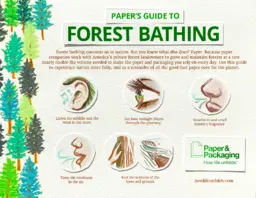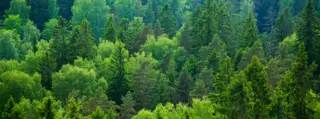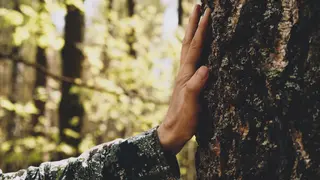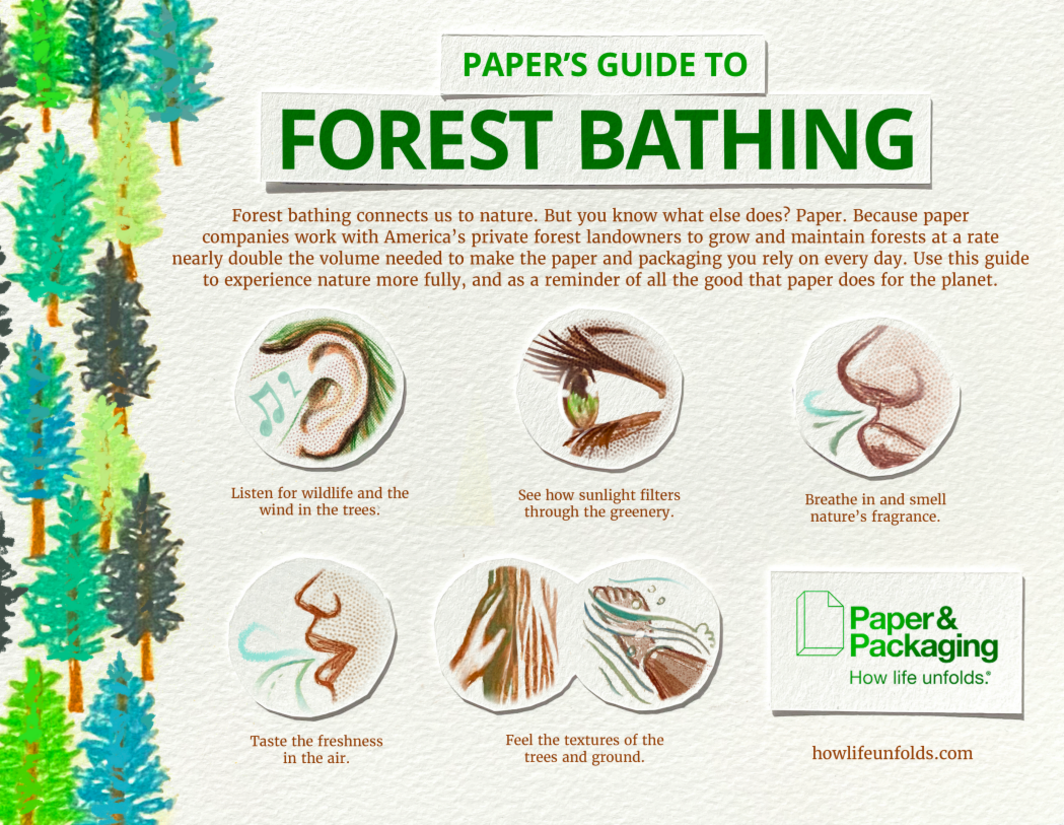
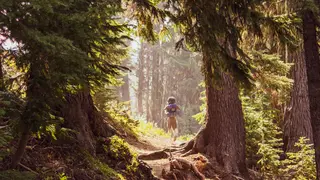
Craving an opportunity to zone out, connect with what’s going on in the “now” that exists outside your device screens, take in some fresh air and maybe even learn something new about yourself? Enter forest bathing, a therapeutic experience that anyone and everyone can enjoy.
What Is Forest Bathing, or Shinrin-Yoku?
Forest bathing, originally known as shinrin-yoku, was coined in Japan in the 1980s as a preventive healthcare practice to combat stress, insomnia, depression and more. Also known as forest therapy or nature bathing, this activity is a way to slow down and connect with each of your senses. What you see, hear, smell and feel is an entirely different experience when you let everything that’s happening in a refreshing green space wash over you.
Shinrin-yoku can go deeper than just looking at beautiful trees. The practice draws on three distinct concepts of Japanese culture:
- Yūgen: An awareness of the beauty of the world that cannot be expressed through words. Letting yourself be in awe of the forest is a way of practicing yūgen.
- Komorebi: An appreciation of the interplay of the sun and the forest—specifically, the way the sunlight leaks through the forest canopy.
- Wabi-sabi: A recognition of the beauty of imperfection and ephemerality. Notice how even a tree that’s damaged or otherwise imperfect still has its own allure.
What Are the Health Benefits of Forest Bathing?
Shinrin-yoku has proven de-stressing benefits. That extends beyond simply making you feel more relaxed: Forest bathing improves immune function, reduces blood pressure, slashes stress hormones, activates the “rest and digest” arm of the nervous system, and improves mental health measures for conditions such as anxiety, depression, anger and fatigue.
Indirectly, forest bathing has health benefits for the forests, too. The more you appreciate being in nature, the more you want to learn how to protect our forests—something the paper and packaging industry already knows. The paper industry is part of a larger movement to grow and protect forests and the habitats around them by working with the owners of privately-owned American forests, which are among the most sustainable managed in the world. In the U.S., more than half of the forestlands are privately-owned and managed by about 11 million forest owners across the country. Many of the forests are small, family-owned tracts in rural communities that provide some income to keep them as forests and not be sold off for agriculture and development. The landowners spend years carefully cultivating and stewarding the forest, harvesting only what is needed and continually planting to ensure regrowth. By nourishing private, independently-owned forests, paper makers help care for and support forest growth to create the products you love and need, from the novel you can't put down to the box protecting your food.
By stepping away from the noise of our day-to-day world and connecting with nature through forest bathing, you have a unique opportunity to tune into the now, and paper can help you do that even better. Keep reading to learn how.
How to Forest Bathe
Forest bathing is not a hike, nor is it simply a nature walk. It is a slow walk through nature where you focus on taking in the forest environment with your senses. “It’s really about being present in the present moment,” says Tamberly Conway, director of partnerships at Forest Bathing International and CEO of Conservation Conexions.

Not sure where to start? Print out paper’s guide to forest bathing for some suggestions, such as listening to wildlife in the trees, watching sunlight filter through flora, breathing in and tasting crisp woodland air, smelling nature’s many fragrances, and feeling the texture of tree bark, rocks and earth.
Enhance your excursion by packing a paper journal. Use your journal to help you focus on and identify what you’re seeing, touching, smelling and feeling. Recording your shinrin-yoku experiences on paper can help bring you into the present, connecting the natural feel of paper to the nature around you.
Find a Forest Bathing Guide
Conway, whose expertise is in relational forest therapy, has led many in-person and virtual forest bathing practices. Her top tip: Find a local guide before trekking out on your own. After a guided tour, she says, it’s much easier to go into the natural world and incorporate some of the forest bathing practices you learned.
“When I guide people in the practice or [am being led], there’s definitely a difference in the relationship connection that occurs between people and what we call the ‘more-than-human world,’” Conway says. “You notice things that are different, [and] you notice your deep connection to it all.”
Ready to experience forest bathing for yourself? Find a local guide, and don’t forget to pack a nature journal and a boxed water for your outdoor excursion.


